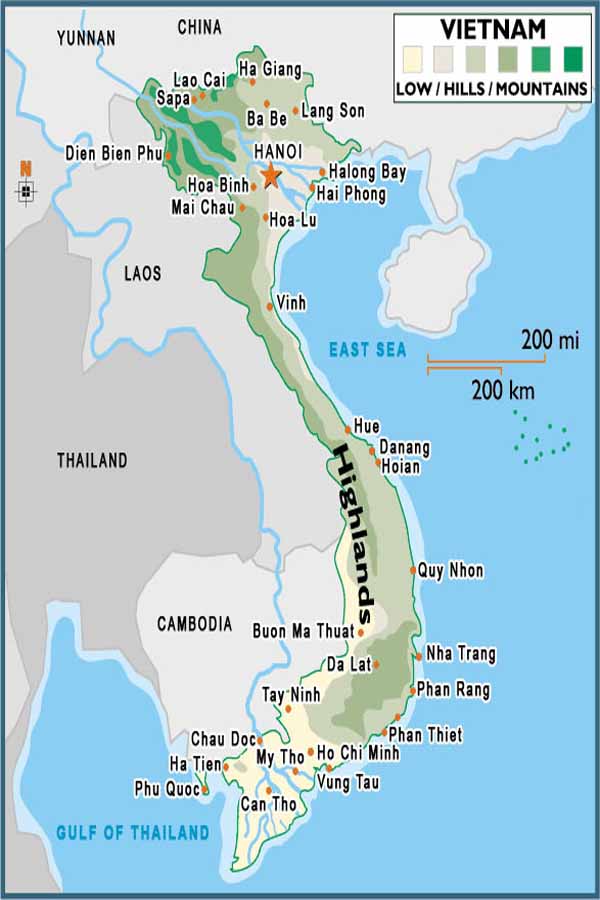 |
Vietnam Trip
March 2010
SAIGON (HO CHI MINH CITY)
Time for another flight…this time to Saigon (city of 9,000,000 people and now known as Ho Chi Minh City); however many natives still refer to it as Saigon). We were surprised to see a very modern and Americanized city. It is evident that the Americans were here and left their traces. I see no traces of Communism. It appears almost like an American city….beautiful large hotels, many modern buildings, New York type restaurants, many ethnic touches, upscale stores, trendy everything.
The city has been influenced by the French during their colonial occupation of Vietnam, and a number of classical Western-style buildings in the city reflect this, so much so that Saigon was called "the Pearl of the Far East". It is still adorned with wide elegant boulevards and historic French colonial buildings. Some prominent structures in the city center are the palace, city hall, municipal theatre (Opera House), Post Office, Notre-Dame Cathedral, Hotel Majestic, Rex Hotel (former hangout for American officers and war correspondents in the 1960s and 1970s).
One of my favorite moments and lunches in Saigon was going to Pho Hung, a Vietnamese noodle soup restaurant…only noodle soup is sold…either with chicken or beef. I had chicken, and it was absolutely the best noodle soup I will ever have. Lime is served to squeeze over top. It is served in one huge bowl (probably could serve 3 or 4 people). I ate it all. All 13 of us really enjoyed the soup. Jim had 3 bananas and 2 beers in its place.
Many thanks to our outstanding tour leader, Khahn, who is from Saigon. We appreciate his expert guidance and his knowledge of Vietnam. In our experience, he is one of the top tour leaders employed by Overseas Adventure Travel.
MEKONG DELTA
While in the Saigon area, we cruised west to the watery landscape of green fields and sleepy villages in the Mekong Delta (some interesting photos), then took a sampan to navigate a narrow canal to an orchard and apiary. We had lunch at an outside restaurant, then walked to a coconut farm where we bought some candy and other items that were made there.
The Mekong region is famous as a large rice growing area. It produces about half of the total of Vietnam's rice output. Vietnam is the second largest exporter of rice globally after Thailand. In fact, the delta produces more rice than Korea and Japan titleogether. Additionally, the region is home to a large industry of other fish, catfish, and shrimp, much of which is exported.
CU CHI TUNNELS
A favorite trip was to the Cu Chi Tunnels. The South Vietnamese Communists (Vietcong) built this vast network of tunnels and worked over 25 years to expand this multi-level network. There are mess halls, meeting rooms, operating room, cinema, factories and ammunition stores. It is a 125 miles long underground maze where thousands of fighters and villagers hid/fought during the Vietnam War. We had the opportunity to go down into these tunnels if we could duck walk. They are about 3-4 ft. high and wide, so it is not comfortable to stay there long. And they are amazing! I did go down in different places and duck walk to see how incredible they really are.
AFTER SAIGON FELL
The Fall of Saigon, the capital of South Vietnam, by the North Vietnamese Army happened on April 30, 1975. This marked the end of the Vietnam War and the formal reunification of Vietnam under Communist rule. There was increased concern in Saigon that the city, which had been fairly peaceful throughout the war and whose people had endured little suffering was soon to come under direct attack. Many feared that once Communists took control of the city, a blood bath would take place. The fall was preceded by the evacuation of almost all the American civilian and military personnel in Saigon, along with tens of thousands of South Vietnamese civilians associated with the southern regime.
The Communists renamed the city after Ho Chi Minh, former President of North Vietnam. Order was slowly restored, titlehough the deserted U.S. embassy was looted, along with many other businesses. Communications between the outside world and Saigon were cut.
Americans and Vietnamese hold a remembrance each year on May 1 marking the fall of Saigon in 1975. This year’s event is important for it will be the 35th year of remembering. While we were there, the plans had begun….signs were being hung, notices/ads were being distributed, talks/discussions were being planned.
|
SAIGON
Click on the photo to view larger
|

